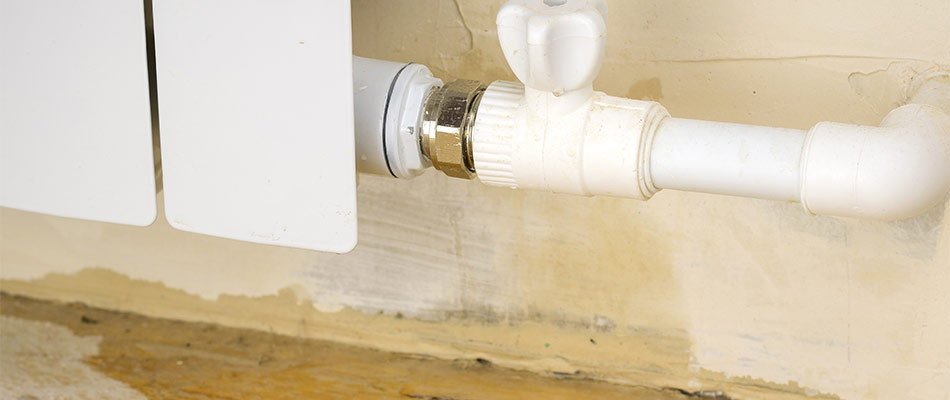Exactly how to Discover and Repair Water Leaks-- A Comprehensive Overview
Exactly how to Discover and Repair Water Leaks-- A Comprehensive Overview
Blog Article
In this article in the next paragraph you will discover a lot of great help and advice relating to Finding hidden leaks.

Early detection of dripping water lines can mitigate a prospective calamity. Some tiny water leaks might not be visible.
1. Analyze the Water Meter
Every residence has a water meter. Inspecting it is a proven manner in which helps you find leaks. For beginners, switch off all the water resources. Ensure no one will flush, use the faucet, shower, run the washing equipment or dishwasher. From there, go to the meter and watch if it will certainly transform. Given that no person is utilizing it, there must be no motions. If it relocates, that suggests a fast-moving leak. If you find no modifications, wait an hour or 2 and inspect back again. This implies you might have a slow leak that can even be underground.
2. Examine Water Usage
Evaluate your water costs and also track your water intake. As the one paying it, you should observe if there are any kind of discrepancies. If you spot sudden changes, despite your usage coinciding, it indicates that you have leakages in your plumbing system. Bear in mind, your water costs need to drop under the same array each month. An abrupt spike in your bill suggests a fast-moving leak.
A steady rise every month, also with the exact same practices, shows you have a slow-moving leak that's also gradually intensifying. Call a plumber to thoroughly examine your building, specifically if you feel a cozy area on your flooring with piping underneath.
3. Do a Food Coloring Examination
When it comes to water intake, 30% comes from commodes. If the shade in some way infiltrates your dish throughout that time without flushing, there's a leak in between the tank and bowl.
4. Asses Exterior Lines
Don't neglect to inspect your outdoor water lines too. Test spigots by connecting a garden pipe. Ought to water leak out of the link, you have a loose rubber gasket. Change this as well as make certain all connections are tight. If you have actually obtained a sprinkler system, it will aid get it professionally took a look at and also maintained every year. One little leakage can lose tons of water and also surge your water costs.
5. Analyze the scenario and evaluate
Home owners need to make it a practice to examine under the sink counters and also even inside closets for any kind of bad odor or mold development. These two warnings suggest a leak so prompt attention is called for. Doing routine examinations, also bi-annually, can conserve you from a major issue.
Inspect for discolorations and damaging as most appliances as well as pipelines have a life expectancy. If you believe leaking water lines in your plumbing system, don't wait for it to rise.
Early detection of dripping water lines can alleviate a possible catastrophe. Some little water leakages may not be visible. Examining it is a guaranteed method that assists you discover leakages. One little leak can squander heaps of water and also increase your water costs.
If you believe dripping water lines in your plumbing system, don't wait for it to rise.
WARNING SIGNS OF WATER LEAKAGE BEHIND THE WALL
PERSISTENT MUSTY ODORS
As water slowly drips from a leaky pipe inside the wall, flooring and sheetrock stay damp and develop an odor similar to wet cardboard. It generates a musty smell that can help you find hidden leaks.
MOLD IN UNUSUAL AREAS
Mold usually grows in wet areas like kitchens, baths and laundry rooms. If you spot the stuff on walls or baseboards in other rooms of the house, it’s a good indicator of undetected water leaks.
STAINS THAT GROW
When mold thrives around a leaky pipe, it sometimes takes hold on the inside surface of the affected wall. A growing stain on otherwise clean sheetrock is often your sign of a hidden plumbing problem.
PEELING OR BUBBLING WALLPAPER / PAINT
This clue is easy to miss in rooms that don’t get much use. When you see wallpaper separating along seams or paint bubbling or flaking off the wall, blame sheetrock that stays wet because of an undetected leak.
BUCKLED CEILINGS AND STAINED FLOORS
If ceilings or floors in bathrooms, kitchens or laundry areas develop structural problems, don’t rule out constant damp inside the walls. Wet sheetrock can affect adjacent framing, flooring and ceilings.
https://www.servicemasterbyzaba.com/blog/how-to-detect-water-leakage-in-walls/

I have been very involved in Finding hidden leaks and I am praying you appreciated our blog entry. Sharing is good. Who knows, you may just be doing someone a favor. Thanks a lot for your time spent reading it.
Report this page